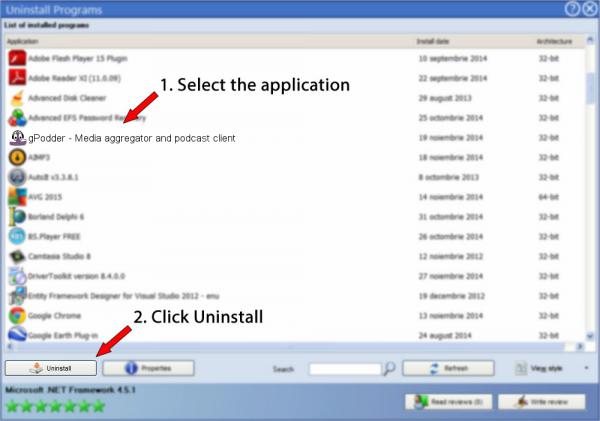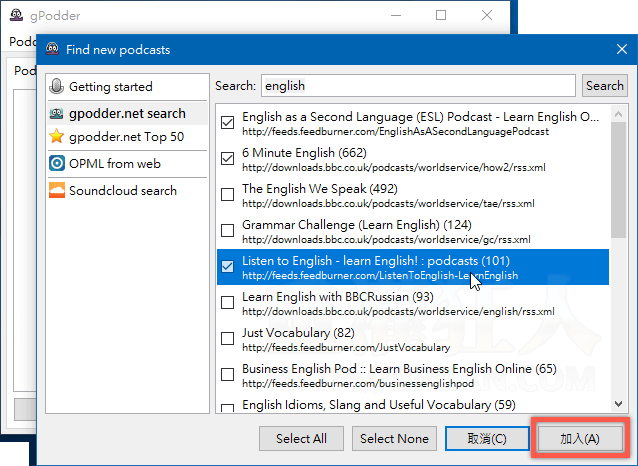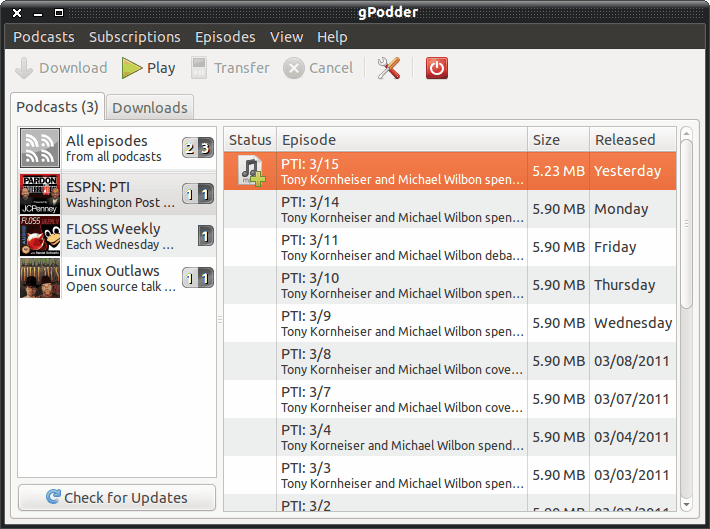
These dependencies occur because you can always use functions from one package to create new functions to be included with another in a new package.Īfter you have installed the package, it is not automatically included in your program. Removing package from ‘C:/Users/ccrea/Documents/R/win-library/3.6’ Because of this, you must add it using the library function with the format of library(name), where “name” is the name of the package being loaded.

This simple function easily uninstalls the selected package. Once you have applied this function to a package that you had previously installed it will no longer be available for use. If you load a program that you had previously written using the functions from a package that you have uninstalled you will get error messages.

If you want to use the functions again you will have to reinstall the package.Īs you can see from the above example, uninstalling a package does not take long.
Uninstalling gpodder install#
In fact, it often takes less time than it does to originally install the package. The main reason it often takes longer to install a package than it does to uninstall it is the fact that uninstalling a package does not require the time or process involved in downloading the package and unpacking it for installation. The remove packages function usually works quickly and easily. The package removal process will render the functions defined by the package nonfunctional. If you are not careful when uninstalling a package, you could find yourself having to deal with error messages if you try to run a program that you used that package in.
Uninstalling gpodder code#
Because uninstalling a package makes it unusable you need to make sure that you remove any code that uses it. When removing a package removing the code that uses it will help you to avoid getting errors from trying to run nonexistent functions. If you try to access the package after uninstalling it, you will get an error message as seen in this example where we tried to uninstall a package that we have just uninstalled.Įrror in library(dplyr) : there is no package called ‘dplyr’ There are some common issues that can arise when you uninstall a previously installed package.Įrror in remove.packages : there is no package called ‘dplyr’ It is important to make sure that you have any packages installed that you need to run a given program before you run it. In this case, we tried connecting a package to our program that we had uninstalled. This would be the most common issue you are likely to have after uninstalling a package. If you have any programs that were using that package and you try to run them, you will get error messages. These error messages will include a function not found error. This would be an easy problem to encounter because you could forget that you uninstalled the package or forget that that particular program uses the package that you just deleted. The way to avoid this problem is to go over your R programs to see if you still have any that use the package you are considering uninstalling.

If you do, you may want to consider removing them along with it. Sometimes a package does not uninstall when you run the command. The best solution for this issue is to manually delete the package. However, the computer may not let you do this while the R environment is still running. If you have this problem, you should shut down the R environment and then manually delete the package before starting up your R environment again. After this, when you open up your R environment, the package should be gone and you will find that you do not have access to it any longer.


 0 kommentar(er)
0 kommentar(er)
